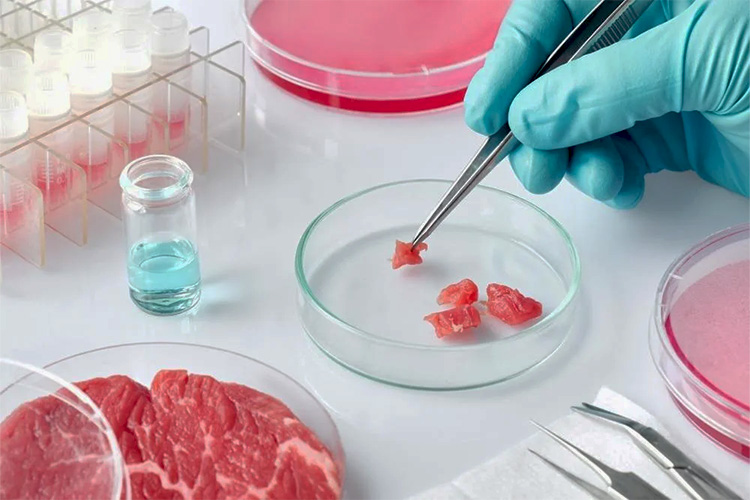
A scientific work station dedicated to the production and study of lab grown meat. photo by Anyaivanova
The US Department of Agriculture has approved developments in lab grown meat, paving the path for a new way to provide meals.
For thousands of years, society has domesticated animals and raised them for meat. Farming livestock has been a convenient way to provide meat for the human population. However, this practice leads to countless environmental hazards and the normalization of animal abuse. Global warming is on the rise, and awareness of the issues within animal agriculture is quickly growing, but society may not have to worry about giving up meat. Two companies, GOOD Meat and UPSIDE Foods, have begun research and experimentation on another way to produce the well-loved proteins that people consume today.
The process to create lab grown meat begins with using a harmless collection of cells that are gathered from a host animal. Once a specific amount of cells are collected, they are put into the ideal conditions for growth to occur. In a few weeks, the cells develop into a mass of protein that is ready to be texturized and shaped into a desirable, meat-like condition.
GOOD Meat and UPSIDE Foods have currently been granted the ability to provide their meat to selected restaurants. Both companies have stated that their main goal as of now is to enlarge the production process so they can begin providing to supermarkets as well.
One would assume that the process of growing meat in labs would generate fewer fossil fuels than typical agricultural production. However, many researchers claim that the emissions from the factories generating the cultured meat are close to being equal, or in some cases, even more than those generated from traditional farms. According to Casey Crownhart’s article, “…In the biopharmaceutical-like process, cultivated meat leads to significantly more emissions than beef production today: between 250 and 1,000 kilograms of carbon dioxide equivalent for every kilogram of beef, depending on the specific scenario.”
Generating this meat has its upsides and downsides. One such upside of factory-produced meat includes the fact that more space would be available for nature to thrive on what was originally farmland. Negatively though, emissions and the effect on climate change could continue to worsen.
The production of lab grown meat also raises questions about its safety for consumption. Many worry that the use of cells in a lab could lead to contamination issues in the production of the meat. Recently, however, the Food and Drug Administration has finalized their decision that lab-grown meat is indeed safe to eat. Along with the approval from the FDA, researchers have explained that this meat houses all of the original nutrients and protein that normal meat contains.
Many consumers who are looking forward to purchasing this cultured meat wonder if the prices will differ from normal meat. Currently, both companies are indeed looking at a retail price that is much higher than the normal price of farmed meat. The price factor plays a heavy role in deciding the success of GOOD Meat and UPSIDE foods.
Will the moral basis of cultured meat be enough to generate profit and become successful? This early in the production stage, it’s difficult to tell how this new way of meat will affect supermarkets and consumers in the future. One thing is for sure – many things need to change regarding the way meat is currently produced, and cultured meat may be an approach to a solution.